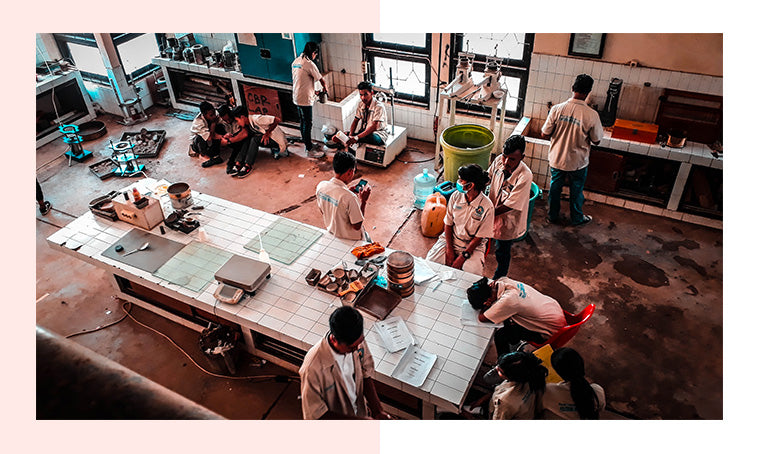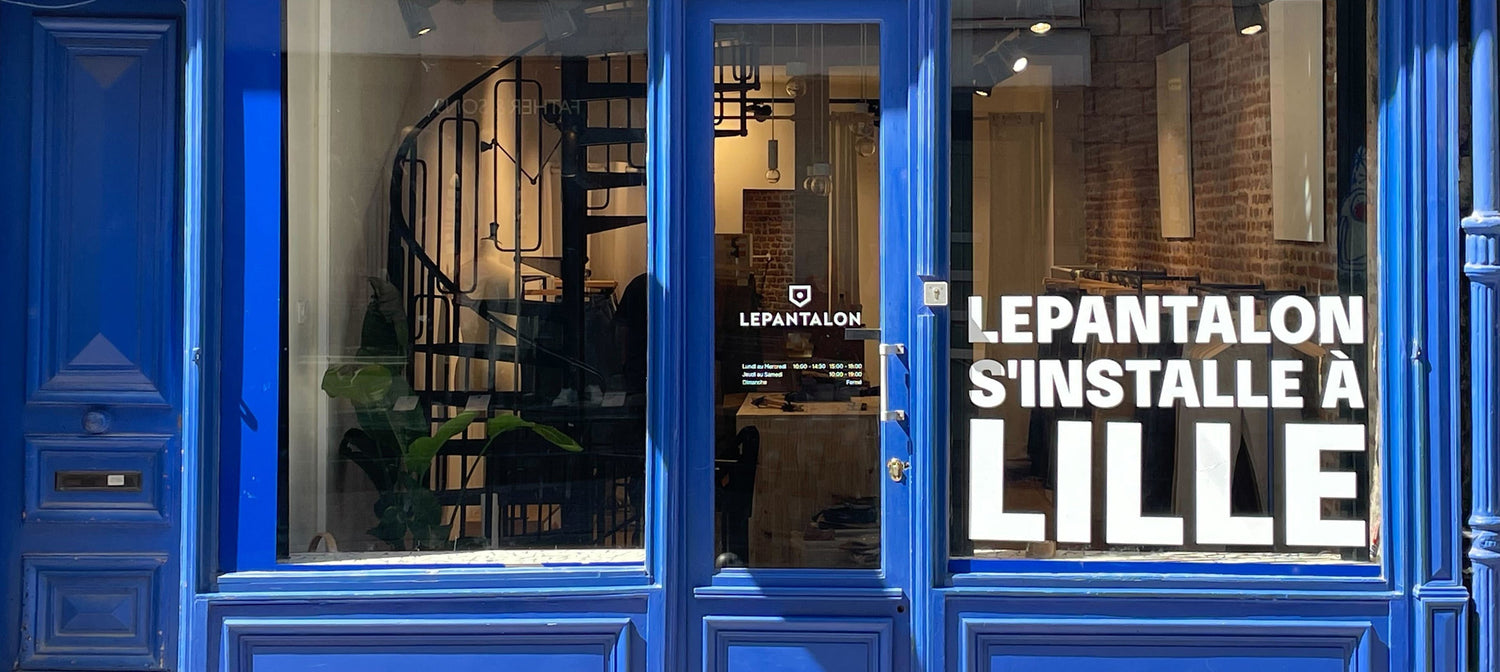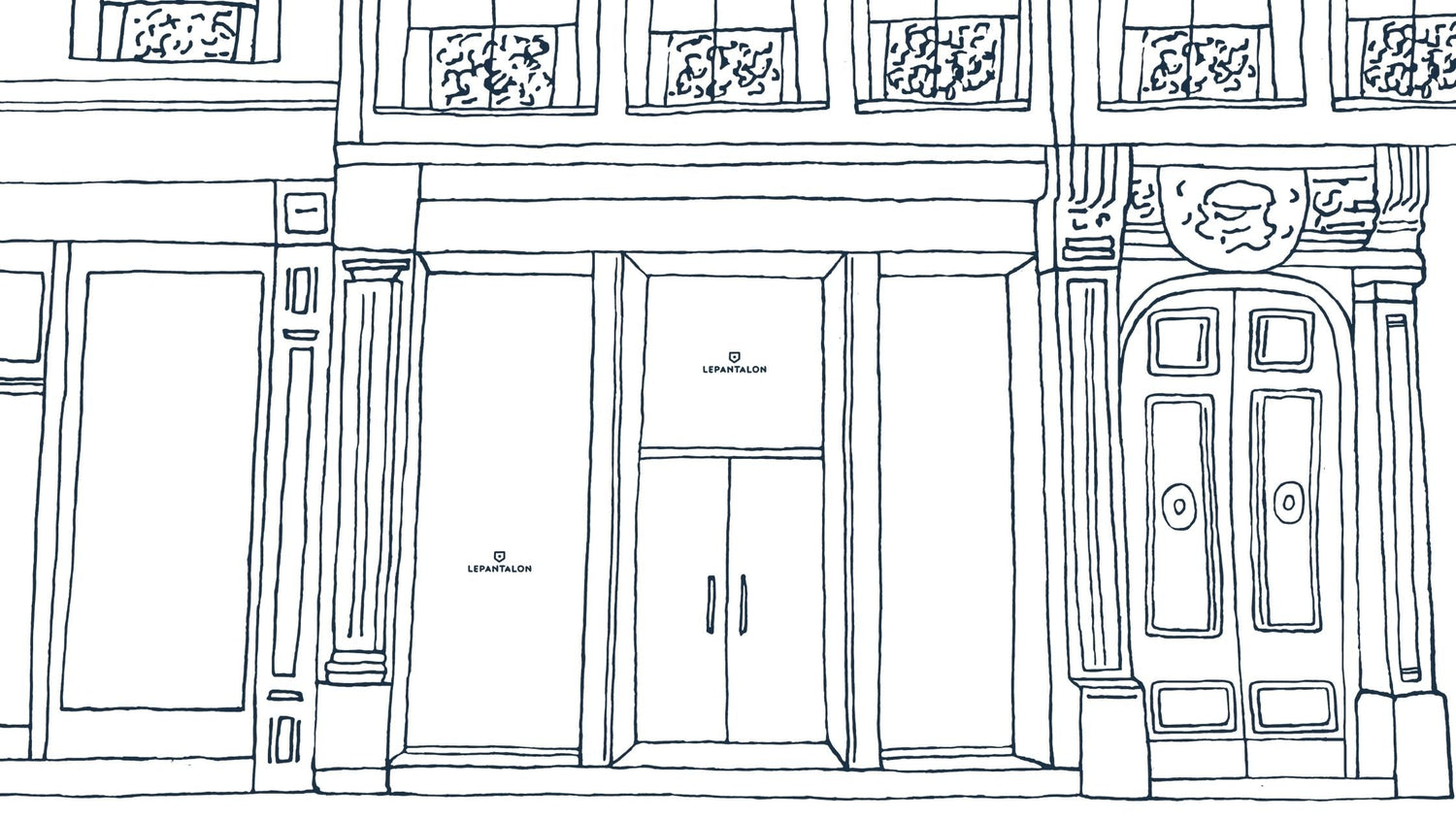At LePantalon, we've decided to tell you more about the sandblasting technique for jeans. It's a highly toxic and dangerous technique.
We have decided not to use it and we explain why.
We'll also introduce you to the various alternatives that exist. You'll see that manufacturing facilities have other options available.
What is the sandblasting technique on jeans?
This method has been used extensively since 1990. It bleaches and ages jeans, giving them a worn appearance.
Textile companies practice it for purely aesthetic purposes. It involves blasting sand under high pressure onto jeans using a "cannon."

Why is it harmful to workers?
In the European Union, it has been banned since 1966. The problem with this technique is that the sand contains silica dust.
This dust, if inhaled, causes congestion in the lungs. It enters the lungs but does not leave and can cause silicosis. This disease is an incurable and fatal lung infection.
Generally, the factories producing these jeans do not protect their workers. They work in confined spaces without protection, where they breathe in large amounts of dust.
In 2009, Turkey, one of the largest denim-producing countries, decided to ban this technique. Following the deaths of 46 workers and more than 5,000 people falling ill (with an average of only 6 months of exposure), the sandblasting technique was banned from factories.
Following this revelation, numerous investigations were conducted around the world. Journalists and doctors decided to denounce this method and its harmful effects. Some companies therefore decided to ban it from their factories.

However …
Many clandestine workshops are opening up out of sight. Brands also sometimes have behaviors that deserve to be denounced; some decide to export their factories to less vigilant countries . For example, Bangladesh or China, where this technique continues to be used.
According to some sources, despite the laws, many clandestine sandblasting workshops are still in operation (even in Turkey). The workers employed there are mainly immigrants and undocumented workers actively looking for work.
Some workshops have found other, less expensive techniques. They remain just as dangerous as sandblasting but allow them to keep their customers while remaining legal.
For example, the use of dyes or repeated washing, carried out with highly polluting chemicals.
Public Eye obtained the testimony of a worker who worked in a sandblasting factory. It's very interesting, we recommend you take a look!
You will also find a testimony from Abdulhalim Demir, representative of the Clean Clothes Turkey Campaign, explaining how the situation of garment workers should be improved.
You can also make a difference. When you buy clothing, have good habits: check the product composition labels or ask the store assistants. This will help us avoid encouraging this practice by consuming products from brands that produce this way.
Awareness of sandblasting practices

The countryside
Shock campaigns have been carried out by organizations such as Le Collectif de l'étiquette to warn the population about these toxic practices.
In particular, they carried out a shock campaign in the capital:
-
- They went to the center of Paris in front of department stores suspected of selling products that were made using this method.
-
- An actor dressed up as a worker and was then locked in a cabin representing the enclosed space where these workers work.
-
- The Collective then sandblasted the actor to caricature the factory sandblasting scenes.
- A skull was painted on the cabin to represent the deadly aspect of this technique.
This installation was located in the middle of a Parisian street, and was intended to shock people.
The Label Collective wanted to create real awareness among the public.
Maïté Errecart, president of the Ethics on Label collective in France, proclaims in several interviews that " the consumer has the right to know whether the jeans he is wearing are lethal or not ."
According to Public Eye, the Clean Clothes Campaign has called for commitment from everyone. Businesses, designers, consumers, and the government all have commitments to make at their own level.
Television
Several television channels also wanted to report on this practice to reach the general public. They therefore sent several journalists to the countries where these factories are located.
Unfortunately, as countries that make their living from the textile industry, this subject remains very taboo. No journalist has managed to find any sweatshops despite strong suspicions during the visits. In fact, they only visited part of the factory, as if something was being hidden from them. You can easily find these reports on the internet if you wish to watch them.
Our workshop and its alternative technique

We will now introduce you to the workshop we work with. We produce the fabric for our jeans at Candiani . This famous Italian workshop has existed since 1938. With over 80 years of experience, it has established itself as the best in the denim textile industry and guarantees "Made in Italy" quality.
Sustainability is a fundamental value in Candiani's production, which has allowed it to become "The Greenest Textile Company in the World of Blue".
Constantly seeking new innovations to produce greener and more environmentally friendly products, Candiani is at the forefront of a new process: “Indigo Juice.” This solution to sandblasting aims to fix the indigo on the surface of the yarn, and only on the surface. This makes bleaching easier. This technique is a guarantee of quality. Because even if the color is only fixed on the surface of the yarn, the durability is the same.
In addition, the factory uses even more innovative treatments, such as laser and ozone washing. Laser washing reduces water consumption by 97.4%, energy consumption by 60%, and chemical consumption by 80%. The laser also allows the desired design to be engraved on the canvas. It's a very environmentally friendly method that allows you to give free rein to your imagination.
Ozone washing is also a method that reduces water usage. It's also a responsible method because it doesn't release any toxic emissions into the atmosphere. Ozone, derived from the oxygen we breathe, also has the power to give fabric an aged appearance.
Each of our purchases is an act that has many repercussions. We have decided to be responsible with Candiani to offer you quality and sustainable products. And you, what do you decide to do?
Now you know where you're going!
Please feel free to comment on this article to give us your opinion or ideas for articles you would like to have.


